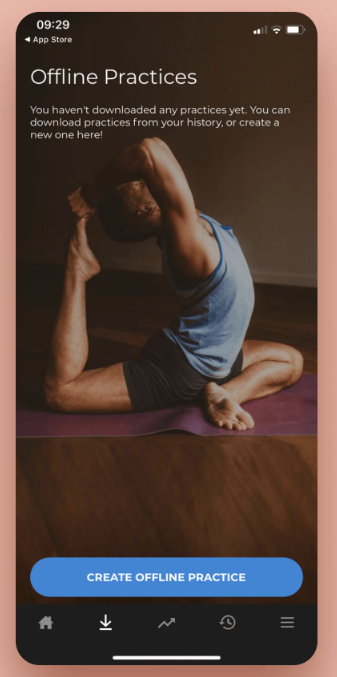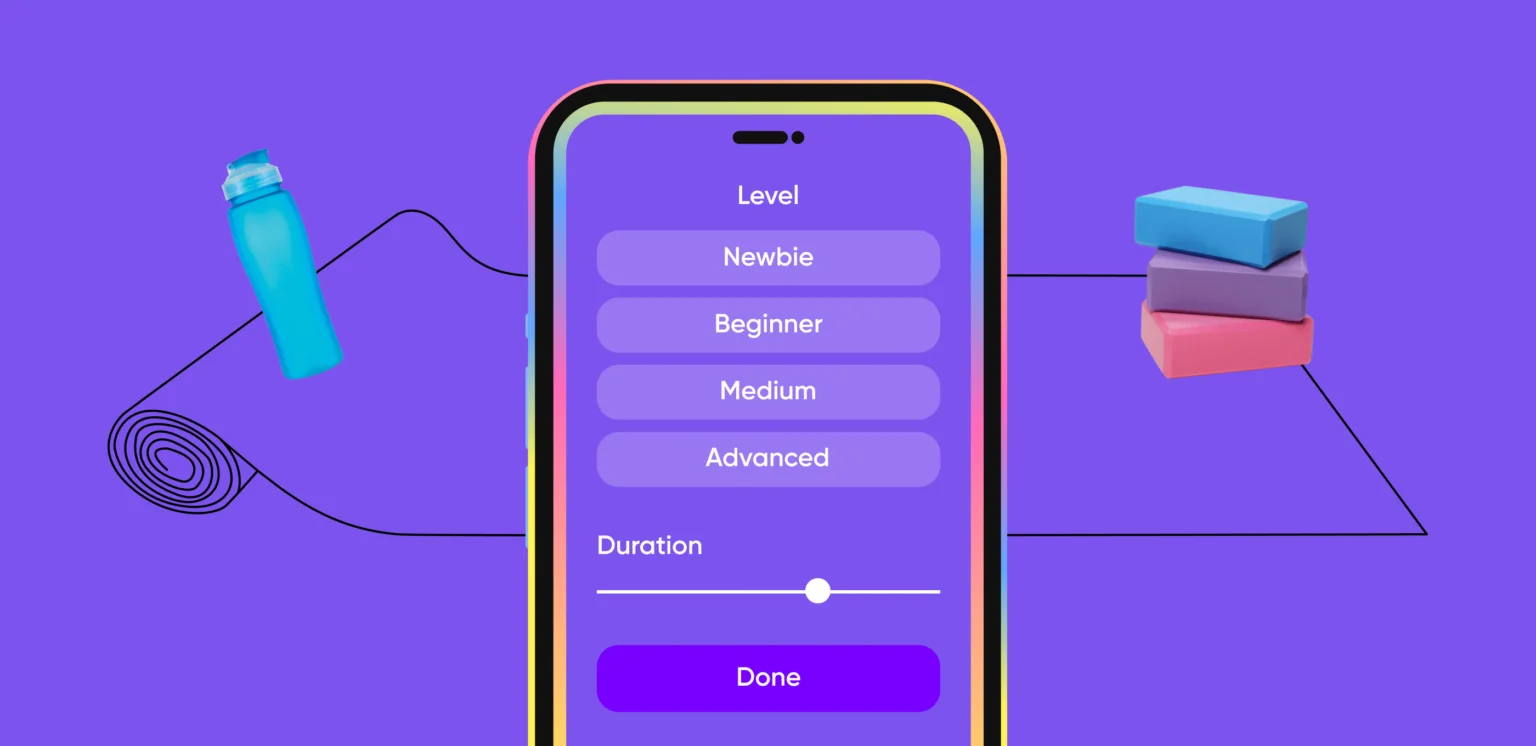The Rise of Yoga Apps: A Guide to Developing Your Own
Yoga, an ancient practice, has become more accessible with the advent of technology, and yoga apps have played a crucial role in this. They have made it easier for individuals to practice yoga from the comfort of their homes, providing personalized workout plans and guided meditations.
The popularity of these apps has been on the rise, and developing a yoga app can be a great business opportunity for entrepreneurs and startup founders. The growing demand for wellness apps and the need for unique and innovative features creates a lucrative market for developers to tap into and offer value to millions of yoga enthusiasts worldwide. In this article we will delve into the topic of yoga app development.
4 Popular Yoga Apps for All Levels
As a businessman and yoga app developer, you likely recognize the importance of market research and competitor analysis before starting the development process. This enables you to identify and incorporate their strengths into your app. At our service, we offer assistance with conducting comprehensive market research and competitor analysis to help you create a successful and competitive yoga app:
- Down Dog: This app provides a customizable yoga practice that adapts to the user’s level of experience, pace, and time constraints. With its variety of styles and customization options, Down Dog caters to yogis of all levels and preferences.
- Glo: Glo offers a vast library of yoga, meditation, and Pilates classes taught by renowned instructors. The app’s community feature also allows users to connect with others and share their progress. Glo’s popularity can be attributed to its high-quality instruction and the extensive variety of classes.
- Asana Rebel: Asana Rebel combines yoga with high-intensity interval training (HIIT) to provide a challenging and dynamic workout. The app’s personalized workout plans and video and audio guidance make it appealing to fitness enthusiasts who want to incorporate yoga into their routine.
- Yoga Studio: Yoga Studio offers over 80 ready-made classes and the option to create custom ones. With detailed instructions and high-quality videos, the app guides users through each pose, making it suitable for beginners and experienced yogis alike. Yoga Studio’s popularity can be attributed to its user-friendly interface and high-quality content.

Don’t Launch Your Yoga App Without These Must-Have Features
To provide users with a valuable experience, a yoga app must include certain essential features. Here are the must-have features that every yoga app should include:
Customizable workout plans
The app should allow users to tailor their yoga practice by selecting their level of experience, preferred style, and time constraints.
High-quality videos and images
The app should provide clear and high-quality videos and images that accurately demonstrate each pose and movement.
Progress tracking
The app should include a feature that enables users to monitor their progress and set fitness goals.
Personalized recommendations
The app should provide tailored recommendations to users based on their preferences and past activities.
Community features
The app should offer community features that allow users to connect with other yogis, share their progress, and participate in challenges.
The Technology Stack for Yoga App Development
By the way, do not forget about the tech stack for your app. The technology stack used for developing a yoga app varies depending on various factors such as app features, scalability requirements, and development timeline. Here are some commonly used technologies to build a yoga app:
Programming Languages
The selection of a programming language depends on the platform used for app development. For iOS, Swift is commonly used, while Java or Kotlin is used for Android. React Native, Flutter, or Xamarin can be used for cross-platform development.
Backend
The backend of a yoga app manages all server-side functionalities such as data storage, processing, and management. Popular backend technologies include Node.js, Ruby on Rails, Django, and Laravel.
Cloud Services
App hosting, storage, and data management are commonly performed using cloud services such as Amazon Web Services (AWS), Google Cloud Platform (GCP), or Microsoft Azure.
APIs
APIs are crucial for integrating third-party services and tools like payment gateways, social media platforms, or analytics tools. RESTful APIs are widely used in app development.
Database
The selection of database technology depends on the app’s scalability requirements, data structure, and the size of the user base. Popular database technologies include MySQL, PostgreSQL, MongoDB, and Cassandra.
Payment Gateway
For apps that offer paid subscription plans or in-app purchases, integrating a secure payment gateway is essential. Popular payment gateway options include Stripe, PayPal, and Braintree.
In summary, the technology stack chosen for a yoga app should be optimized to ensure a seamless and robust user experience. The specific requirements and objectives of the app must be considered while selecting the appropriate technology stack.
Inside Look: The Development Process of a Yoga App
- Identify your target audience and their needs: Understanding your target audience’s preferences, pain points, and expectations is crucial for developing an app that resonates with them. Conduct market research and gather user feedback to refine your app’s features and functionalities.
- Design an intuitive and visually appealing user interface: The app’s interface should be easy to navigate, visually appealing, and consistent across all devices. Incorporating high-quality images and videos can enhance the app’s overall experience.
- Build a robust and scalable backend architecture: The backend architecture should be designed to handle a high volume of user traffic, data storage, and management. Implementing security measures and backup and recovery mechanisms is essential to safeguard user data.
- Thoroughly test the app: Conduct comprehensive testing to identify and fix bugs, errors, and performance issues that can cause user dissatisfaction and negative reviews. Testing should include functional testing, load testing, security testing, and usability testing.
- Deploy the app on multiple platforms: Launching the app on both Android and iOS platforms can expand its reach and attract a broader audience.
Risks Involved
Intellectual Property: Ensure that the app’s design, content, and features do not infringe on any existing patents or copyrights.
Data Privacy and Security: Implement robust data privacy and security measures to protect user data and comply with regulatory requirements like GDPR and CCPA.
Integration with Third-party Services: Integrating third-party services like payment gateways or social media platforms can enhance the app’s functionality. However, it also poses the risk of security breaches and data leaks.
App Store Guidelines: Adhering to the app store guidelines and policies of Google Play Store and App Store is essential to avoid rejection or removal from the app store.
User Feedback and Updates: Continuously gathering user feedback and incorporating updates and new features can keep the app relevant and competitive in the market.
How to Earn Money from Yoga Apps
There are many ways to monetize a yoga app, it all depends on your business plan:
In-app Purchases
Give users the option to buy additional content, such as exclusive yoga classes, guided meditation sessions, or personalized coaching. This approach is effective as users who already use the app are more likely to invest money in additional features.
Subscriptions
Offer users a monthly or yearly subscription plan to access premium content or features. This monetization model can generate a steady revenue stream and encourage users to keep using the app.
Ads
Display targeted ads within the app to generate revenue. This model can be successful if the app has a large user base and advertisers are interested in reaching the app’s audience.
Sponsorship
Partner with yoga brands or businesses and feature their products or services within the yoga apps. This model can provide a source of revenue and benefit the app’s users by providing relevant and useful recommendations.
Affiliate Marketing
Promote products or services related to yoga, such as yoga mats or apparel, and earn a commission on each sale. This model requires careful selection of affiliate partners and products to ensure they align with the app’s brand and values.
It is essential to select a monetization strategy that aligns with the app’s objectives and provides value to its users. A combination of these strategies can also be effective, as long as they do not negatively impact the user experience.
Conclusion
Developing Yoga apps can be a promising venture for startups. The increasing interest in yoga and mindfulness practices, coupled with the widespread use of mobile devices, offers a significant opportunity for developers to tap into a potentially lucrative market.
By utilizing the app’s features and functionality, startups can provide users with a convenient and personalized yoga experience. Moreover, with the right monetization strategy, a Yoga app can generate a steady stream of revenue, making it a sustainable business model.








2 Comments